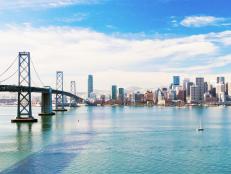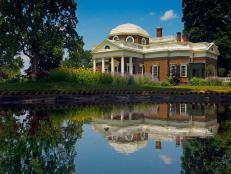The Dark Side of San Francisco

San Francisco, the City by the Bay, is a tourists' paradise. With activities that include the Fisherman's Wharf, tours of Alcatraz, the Golden Gate Bridge and Haight Ashbury, it's no wonder that San Francisco welcomes close to 15 million visitors annually. However, this young American city also has a dark side; its history includes assassination, fraud, kidnapping, terrorism and serial killing.
The Assassinations of Harvey Milk and George Muscone
San Francisco City Hall
Almost exactly 30 years after their deaths, the story of Harvey Milk and George Muscone's assassination at San Francisco's City Hall has been released in theaters nationwide. Milk, starring Sean Penn, is a story of San Francisco's political upheaval at the end of the 1970s. In 1978, the newly elected class of city supervisors was the most diverse in San Francisco's history. Two men in this class were freshmen supervisor Harvey Milk, a gay activist, and Dan White, a strong conservative and former cop and firemen.
Despite their different lifestyles and political viewpoints, Milk and White formed a friendly working relationship. However, this relationship soon took a hostile and deadly turn. Dan White resigned from office due to financial reasons, but soon realized that vacating his conservative seat would have implications on the city's political atmosphere. He petitioned Mayor George Muscone for reinstatement, while liberal Milk warned Muscone that the reappointment of White would cost Muscone crucial gay and liberal votes in the next election. Milk won Muscone's ear, and Dan White was refused reappointment to political office.
On November 27, 1978, Dan White walked into City Hall with a .38-caliber revolver and 10 extra bullets, planning to confront Mayor Muscone face to face. Muscone again refused to reinstate him, and White shot him. White then realized the role Harvey Milk had in this event, and headed toward his office and killed Milk in cold blood. Dan White confessed to the crimes that day.
White's defense attorneys' tactic during trial was almost as famous as the crimes committed. The "Twinkie defense" claimed mental instability due to the vast amounts of sugar and carbohydrates White consumed prior to the crime. Unbelievably, the jury accepted the defense and found White guilty of involuntary manslaughter. He was released after serving only 5 years. The story ends where it began; after his sentence, White returned to San Francisco where he took his own life.
Visitors to City Hall can take the official tour Monday - Friday at 10, 12 and 2. Reservations for large groups are required. The Harvey Milk Memorial was unveiled in May of 2008 and can be viewed on the hall's second floor. Click here to read more about Harvey Milk and the memorial built in his honor.
The Fatty Arbuckle Scandal
Westin St. Francis
In 1921, Fatty Arbuckle was the highest paid actor in the world, receiving a $3 million contract from Paramount Studios. His fame was widespread and he charmed audiences everywhere with his comedic genius. Like the Hollywood of today, it seemed that fame and wealth went hand in hand with partying and extravagance.
Labor Day weekend, 1921, Arbuckle threw a party at the posh St. Francis Hotel in San Francisco's Union Square. Among the first guests to arrive were Maude Delmont, a former clothing model and her friend, well-known party-girl Virginia Rappe.
As the party wore on, it was clear that Virginia was drinking too much. She passed out in Arbuckle's private room. Arbuckle sought help from her friends who took her home to sleep it off. However, after 2 days, her condition worsened. Maude insisted that Virginia be moved to the Wakefield Sanitarium, a women's clinic, but it was too late. Virginia died early the next morning.
For Arbuckle, the nightmare was just beginning. An official cause of death was never determined, and Maude claimed that before she died, Virginia revealed something awful to Maude -- Fatty Arbuckle had raped her the night of the party.
However, between Virginia's party-girl reputation and Maude's criminal record, the charges against Arbuckle got reduced from murder and rape to manslaughter. The jury finds Arbuckle not guilty after the defense introduces evidence that Virginia had received multiple abortions over the years. Her character is tarnished and Arbuckle goes free. The scandal, however, ruined Fatty's reputation. He lost his contract with Paramount, and no one else would hire him.
In addition to the Fatty Arbuckle scandal in rooms 1219-1220, the Westin St. Francis on Powell St. in Union Square, is the place where Sara Jane Moore tried to assassinate President Gerald Ford. On your next visit to San Francisco, consider staying at the landmark hotel that not only has a rich history -- it has a sordid past.
The Kidnapping of Patty Hearst
Hibernia Bank
On February 4, 1974, 19-year-old Patty Hearst was kidnapped by the Symbionese Liberation Army (SLA) from her family's condo. Her kidnappers contacted Patty's very wealthy family; Patty is the granddaughter of publishing magnate William Randolph Hearst and great-granddaughter of millionaire George Hearst. The SLA demanded the Hearst family donate millions of dollars' worth of food to San Francisco's poor.
Although the family complied, the donation proved to be a logistical nightmare. The SLA refused to return Patty, and instead, moved her to an apartment located at 1827 Golden Gate Avenue near the University of San Francisco. She was held in a closet for a month that measured only 3 feet wide. Patty's communications to her family soon grew very strange, and then, on April 15, 1974, Patty Hearst shocked the world.
Patty, along with several other members of the SLA, robbed a branch of the Hibernia Bank. Armed with an M-1 carbine, Patty announced that she'd joined the SLA. One innocent person died, and the SLA walked out with over $10,000. Patty and her associates escaped, but they were soon apprehended by the FBI. This branch of the Hibernia Bank, located at 1450 Noriega St., later became a Bank of America and is now in disrepair.
Hearst stood trial for the bank robbery in 1976. Her attorneys argued that, fearing for her life, Patty began to sympathize with her captors, a psychological response known as Stockholm syndrome. She was found guilty, but in 1979 President Carter commuted her sentence. In 2001, President Clinton gave Patty Hearst a full pardon.
To this day, Hearst holds firm that she was brainwashed and her crimes were that of a victim under the SLA's mind control.
Golden Dragon Massacre
Imperial Palace
In the heart of San Francisco's Chinatown is the Imperial Palace restaurant, previously called the Golden Dragon. Under this name, the restaurant played host to one of the most tragic nights in the history of San Francisco. Two rival teen gangs had emerged from the organized crime rackets controlling Chinatown's black market -- the Joe Boys and the Wah Ching gangs.
The Joe Boys sensed an opportunity to kill the leaders of the Wah Ching, and the location was the Golden Dragon. Five innocent people were killed with another 11 injured -- no one in either gang was harmed. Today, the restaurant on Washington St. still bears the scars of this deadly evening.
Five men from the Joe Boys were arrested and convicted for the crime and 3 of them are still serving out their prison sentences. The massacre led to the establishment of the San Francisco police department's Asian gang task force.
The Imperial Palace is still open for business -- and serves killer dim sum.
The Zodiac Killer
One of the most famous unsolved crimes of all time took place in the San Francisco area. The notorious killing spree began on Lake Herman Road in Benicia, California, roughly 40 miles northeast of the city. On December 20, 1968, high school students Betty Lou Jensen and David Faraday are found dead near their parked car. There were no witnesses.
On July 4, 1969, in Vallejo, California, an unknown assailant guns down Darlene Ferrin and Michael Mageau. While Ferrin died from her wounds, Mageau survived. The shooter called the police from a payphone and proudly bragged of the crime.
On August 1, 1969, letters arrived at the offices of 3 area newspapers. The letters were all from the same source, all claimed to be the killer and were signed with a trademark symbol that would make the Zodiac killer famous. The killer demanded that his letters be published.
On September 27 of that year, 2 more people were attacked. Brian Hartnell and Cecilia Shephard were bound and stabbed repeatedly with a bayonet-style knife. Cecilia died from her wounds, but Brian survived. Zodiac continued to evade capture and demanded his letters be printed.
On October 11, 1969, Zodiac brought his murderous spree from Napa into the City of San Francisco. At the intersections of Washington and Cherry Streets in Presidio Heights, Zodiac, pulled the trigger on his cab driver. Even within the confines of the city, Zodiac avoided police capture.
For nearly a decade, Zodiac continued his letter-writing campaign to the San Francisco media. Each letter was filled with boasts and threats, not all of which came true. In 1 of his last letters, he claimed to have killed 17 people. To this day, the identity of this killer remains unknown and the crime unsolved.
Visitors to the San Francisco area can view all the public places where the Zodiac crimes occurred.
USS Hornet
One of the most haunted ships in the world is not a pirate ship navigating the high seas, but a docked aircraft carrier at the Alameda Naval Base. The eighth USS Hornet was commissioned in 1943 and fought many battles in the Pacific. During her 27 years in active duty, more than 300 people lost their lives onboard, including many to suicide. The ship is out of commission today, but crew and visitors tell ghost stories about moving objects, mysteriously opening doors, flushing toilets and even ghostly sailors wandering the decks.
Click here for a listing of several tours featuring San Francisco's City Hall, Union Square, Nob Hill, and Chinatown.


























.jpg.rend.hgtvcom.231.174.suffix/1674758726773.jpeg)











